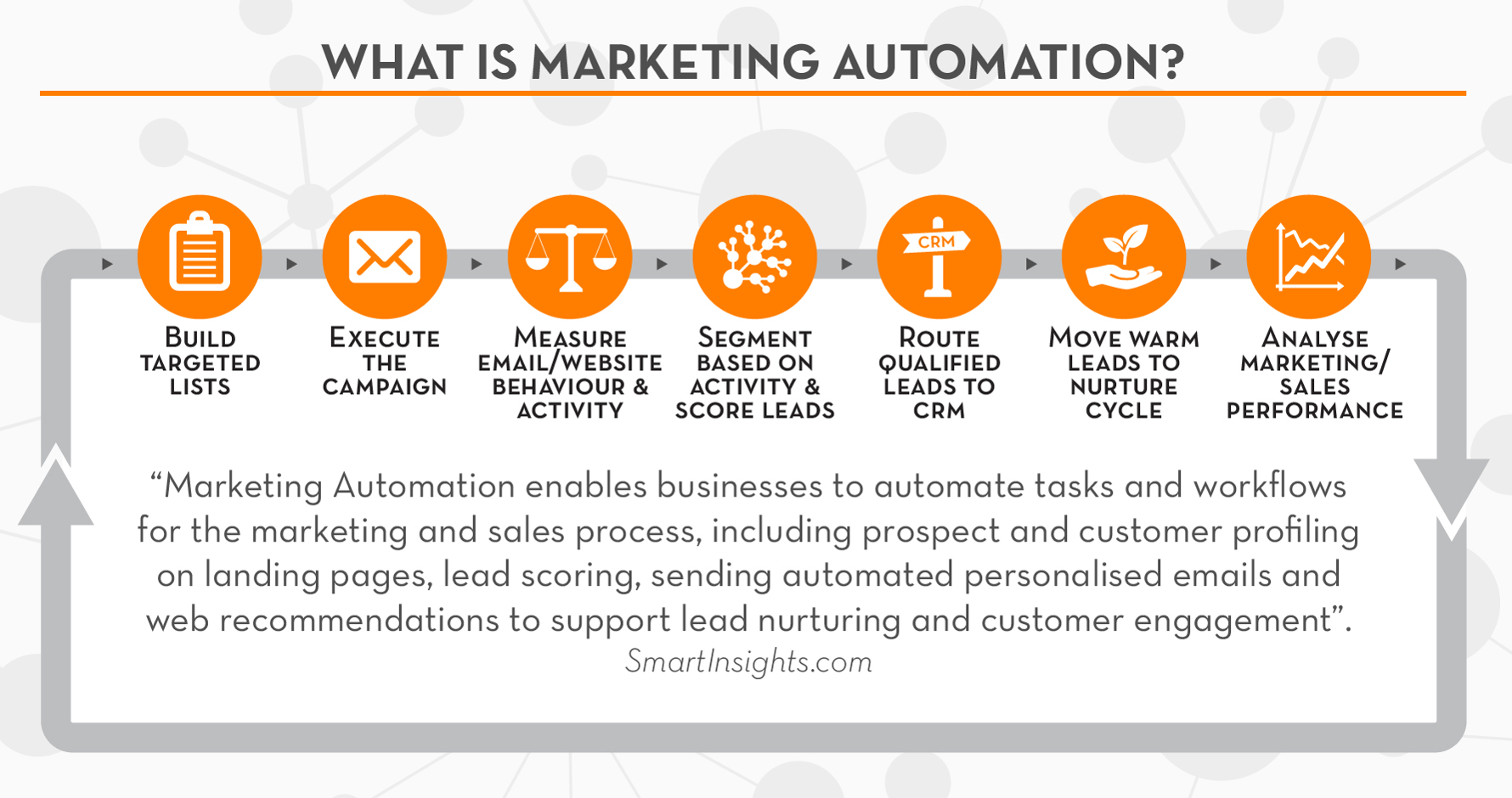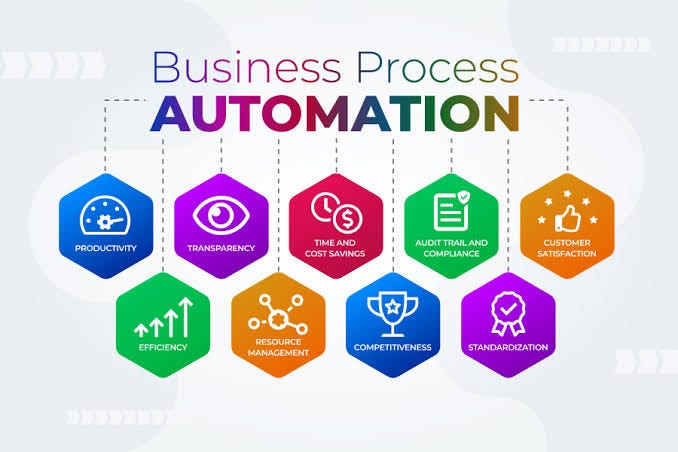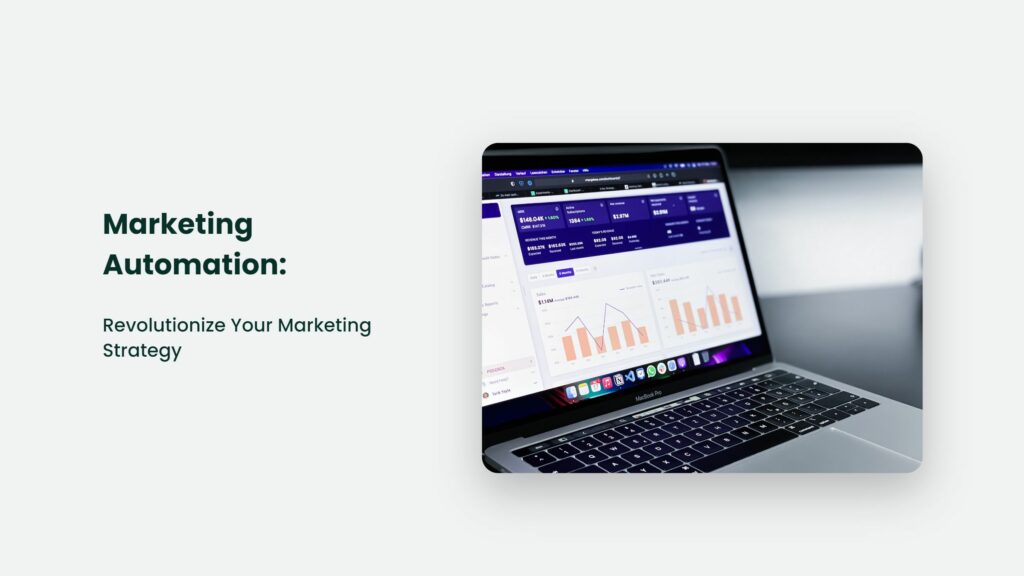Who isn’t interested in streamlining their business operations for more efficiency, right? One way to visibly enhance your business performance is through marketing automation. Imagine, you won’t have to manually execute repetitive tasks anymore. It’s as if you’re letting your business do all the work while you sip on your morning coffee. This article unfolds the integrated process in a digestible manner.
And we’re not talking about any random business buzzword here. automating your marketing can have a beyond substantial impact on your business growth. From customer acquisition to lead nurturing and customer retention, automation is the relatively silent engine that can drive your business up steep growth curves. And you wouldn’t believe how much more you’ll learn as you dive deeper into the article.
Yet, it’s essential to remind you, like any good thing, Marketing automation also requires strategic planning. It’s not just about randomly choosing tasks to automate, but consciously deciding which ones make sense to your business. In this article, the strategic implementation of marketing automation will be thoroughly presented for a deeper understanding, guiding you in making the best decisions for your business.
Yeah, it certainly sounds like industry jargon can be a bit scary but trust me, implementing marketing automation in your business could be a game-changer. Prepare to be amazed as you uncover how it helps you hit those sales targets, improve customer relationships and let you get back to the essential elements of running your business – all while you’re enjoying your coffee.

This image is property of www.risefuel.com.
Understanding Marketing Automation
What is Marketing Automation?
Have you ever dreamed of managing your marketing tasks more effectively and efficiently? If so, dive into the world of marketing automation. Essentially, marketing automation refers to software platforms and technologies designed to more effectively target customers across multiple channels. Think emails, social media, web pages – these platforms automate repetitive tasks that previously required manual intervention.
Benefits of Implementing Marketing Automation
Why should you consider implementing a marketing automation tool for your business? For starters, marketing automation can save you valuable time by managing repetitive tasks. It can also help you prioritize your marketing efforts, allowing for improved customer targeting and segmentation. Moreover, automation tools provide data and insights that can measure and streamline your marketing campaigns.
Common Misconceptions about Marketing Automation
Before diving into this world, let’s clear up a few misconceptions. Marketing automation is neither a magical solution that will solve all marketing woes immediately nor an excuse to bombard customers with irrelevant content. In order to excel, you need to envision it as a tool that complements your existing marketing strategy while receiving the benefits of increased efficiency and intelligence.
Exploring Various Marketing Automation Tools
Overview of Different Marketing Automation Tools
There’s a plethora of marketing automation tools available in the market. Some cater to specific channel needs like email or social media, while others provide a one-stop solution for an entire marketing strategy.
Choosing the Right Marketing Automation Tool for Your Business
The right automation tool for your business largely depends on your individual needs. There’s no one-size-fits-all approach. Consider your business size, the channels you use, and your marketing objectives when choosing an automation platform.
How to Effectively Utilize Your Selected Marketing Automation Tool
Once you have selected the right tool, it’s crucial to leverage its features to the fullest. This involves using the metrics it provides to evaluate and optimize your campaigns, and segment your audience to send more targeted messages.
Starting Your Marketing Automation Journey
Goals and Objectives: Your Automation Foundation
Before jumping into automation, clearly define what you want to achieve. Do you hope to increase customer engagement, boost conversions, or maybe improve customer service? Having a clear vision will guide your decisions and measure your progress.
Creating a Marketing Automation Strategy
Just like any other element of your business, marketing automation requires a sound strategy. Your strategy should include a clear understanding of your audience, streamlined processes, and defined roles for each task.
Implementing Your Marketing Automation Tool
Set up the tool properly to ensure that it handles your tasks as expected. This may involve synchronizing it with your CRM, setting up relevant rules and triggers, handling data import, and much more.
Evolving Customer Engagement with Marketing Automation
Personalization through Automation
One of the biggest advantages of automation is the ability to personalize customer interactions. With sophisticated tools, you can deliver tailored content to each customer, improving engagement and conversion rates.
Boosting Customer Retention with Automated Campaigns
Effective automation can also support customer retention strategies. Automated follow-ups and targeted offers can keep your brand top of mind, encouraging repeat purchases.
Enhancing the Overall Customer Experience
By streamlining your marketing processes and providing relevant content, you can significantly enhance the customer experience. Happy customers equal loyal customers, and loyalty can lead to growth.

This image is property of miro.medium.com.
Marketing Automation and Sales
Aligning Sales and Marketing through Automation
Marketing automation can help align sales and marketing efforts. With a single, cohesive platform, your sales and marketing teams can share data and insights, leading to more coordinated, successful campaigns.
Increasing Sales Efficiency with Automation
Automation can save your sales team countless hours by automating tedious, repetitive tasks. This allows them to focus on what they do best: Closing deals!
Transforming Customer Data into Sales Opportunities
With automation, you can use customer data to identify new sales opportunities. By identifying patterns in your data, you can strategically target customers and increase sales.
Maximizing your Email Marketing with Automation
Crafting Automated Email Campaigns
Email automation can drastically improve the effectiveness of your campaigns. You can set up triggers for certain actions, such as sending a reminder email when a customer abandons their shopping cart.
Elements of a Successful Automated Email Strategy
For an email automation strategy to be successful, it must be customer-centric, relevant, and timely. It also needs to be cohesive, following a systematic plan and pathway.
Analyzing Email Campaign Results for Future Improvement
By tracking open rates, click-through rates, and conversions, you can gain valuable insights into which campaigns work best and make data-driven decisions for future improvements.

This image is property of image.isu.pub.
Measuring Success in Marketing Automation
Key Performance Indicators for Marketing Automation
When it comes to marketing automation, KPIs often include open rates, click-through rates, conversion rates, and bounce rates. These numbers provide a tangible way to measure progress.
Analyzing and Interpreting Automation Data
Data analysis is crucial for the success of any marketing automation strategy. Regularly reviewing and evaluating your measures will provide insights, drive decision-making, and show areas for improvement.
Turning Insights into Action for Continued Improvement
Once you have your insights, the next step is to transform those insights into actions. This could involve adjusting your strategy, testing different approaches, or exploring new channels.
Avoiding Common Pitfalls in Marketing Automation
Recognizing and Overcoming Automation Challenges
Like any technology, marketing automation has its challenges. Be aware of potential issues, like data privacy concerns and technology integration difficulties, and plan accordingly to overcome them.
Preventing Common Mistakes in Automation Strategy
Common pitfalls in automation include over-or under-automation, neglecting the human touch, and providing irrelevant or spammy content. Avoid these by keeping the focus on customer experience and staying true to your brand values.
Mitigating Risks with Best Practices
The best way to mitigate risks is by following industry best practices. These include data management, compliance with privacy laws, regular testing, and performance evaluations.

This image is property of www.cjco.com.au.
Case Studies: Successful Marketing Automation Strategies
Dissecting Effective Automation Campaigns
Looking at successful case studies can provide valuable learning opportunities. Scrutinize what strategies worked, why they were effective, and how you can apply similar tactics in your own campaigns.
Business Growth Achieved Through Marketing Automation
Many companies have witnessed growth through automation. These success stories can serve as motivation and inspiration for your own automation journey.
Lessons Learned from Successful Brands
The journeys of successful brands can provide rich learning spaces. Look at their strategies, their challenges, and their approach towards overcoming obstacles.
Conclusion: The Future of Business is in Marketing Automation
Preparing for Advances in Automation Technology
As technology evolves, so do marketing automation capabilities. Keep an eye on emerging trends and prepare to adapt your strategies to stay competitive.
Final Thoughts on Automation for Business Growth
Marketing automation is a powerful tool for business growth. With efficiency, intelligence, and strategic use, it can revamp -even revolutionize- your marketing efforts.
The Importance of Continued Adaptation in Marketing Automation
In this ever-evolving landscape, being adaptable is key. Embrace change, continue learning, and harness the power of automation to propel your business forward. Revolutionize your business with marketing automation!
